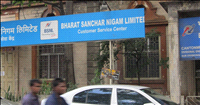ECONOMIC SURVEY 1999-2000: Social sectors
By ECONOMIC SURVEY 1999-2000 | 10 Apr 2007
1.79 The President’s address to the Parliament on October 25, 1999 has spelt out the government’s strategy and policy approach to employment generation and social development. This policy is presaged on rapid and multi-sectoral growth through a bold strategy of economic reforms. The latter will be based on a triad in which the Government provides a strong policy and regulatory leadership; the private sector brings the dynamism and efficiency of the competitive environment; and local democratic institutions and the civil society brings enthusiastic participation by the people.
1.80 Elements of the social policy include :
- Creation of one crore additional employment opportunities per year.
- A thrust to female literacy and primary education. Building of primary school buildings in all un-served habitations.
- Provision of primary health services to all citizens and stabilisation of population.
- Strengthening of welfare & child heath services.
- Greater attention to welfare of the disabled and aged in co-operation with NGOs.
- Provision of clean drinking water to all villages in the next five years.
- Rural connectivity through all weather roads.
1.81 Central Government expenditure (Plan and Non-Plan) on social sectors as a ratio to total expenditure rose from 9.4 per cent in 1993-94 to 11.4 per cent in 1999-2000 (BE). Social sector includes education, health & family welfare, water supply, sanitation, housing, rural development, social welfare, nutrition and minimum basic services, most of which are State subjects. As a ratio to GDP at current market prices, the central government expenditure on social services increased from 1.5 per cent in 1993-94 to 1.7 per cent in 1999-2000 (BE). The central outlay increased by 30 per cent in Family Welfare in 1999-2000 (BE) over 1998-99 (RE), Health by 24 per cent, Welfare of Weaker Sections by 22 per cent and Women & Child Development by 16 per cent. Phase-II of the National Aids Control Programme (NACP) was launched from November 1999 for AIDS prevention and control.
1.82 A special package for housing construction and services was announced in the budget. Interest paid up to Rs.75000, on housing loan for a self-occupied house was exempted from income tax. Commercial banks were permitted to lend upto 3 per cent of incremental deposits for housing. Housing finance companies were given liberal tax treatment of non-performing assets. Their interest income was to be charged on actual basis. A new National Housing Bank scheme provides interest rate concessions for small borrowers. Changes are to be made in foreclosure laws through amendments in the National Housing Bank Act, to facilitate housing mortgages.
1.83 Anti-poverty programmes for generation of self-employment and wage employment in rural areas have been redesigned and restructured to improve their efficacy/impact on the poor. Most of the on-going programmes and schemes for weaker sections of the society have been reviewed and restructured wherever necessary to enhance their scope. Efforts are being made to ensure that women are empowered both economically and socially and thus become an equal partner in the national development along with men.
1.84 Social indicators have shown improvement over the past decade. The crude death rate and infant mortality rate have declined, from 9.8 and 80 per thousand in 1991 to 9.0 and 72 in 1998 respectively. The crude birth rate has declined from 29.5 to 26.4 during the same period. Life expectancy at birth has increased from 57.7 in 1986-90 to 60.3 in 1991-95. The average real wage for unskilled agriculture labourer rose continuously from 1995-96 to 1997-98. However, 1998-99, which was a much better year for agriculture, registered 2.12 per cent decline in real agriculture wages mainly due to sharp rise in Consumer Price Index Number for Agriculture labourers (CPIAL) in this year. It is difficult to assess trends in nation-wide poverty during the nineties in the absence of large sample NSS household surveys after 1993-94 (the next large sample survey is currently under way, with results expected in 2001). However, recent "thin samples" of household expenditure, which are not used for official poverty estimates because of their small sample size, do not show clear positive trends in poverty reduction. This is a cause for concern.
.



















.jpg)









